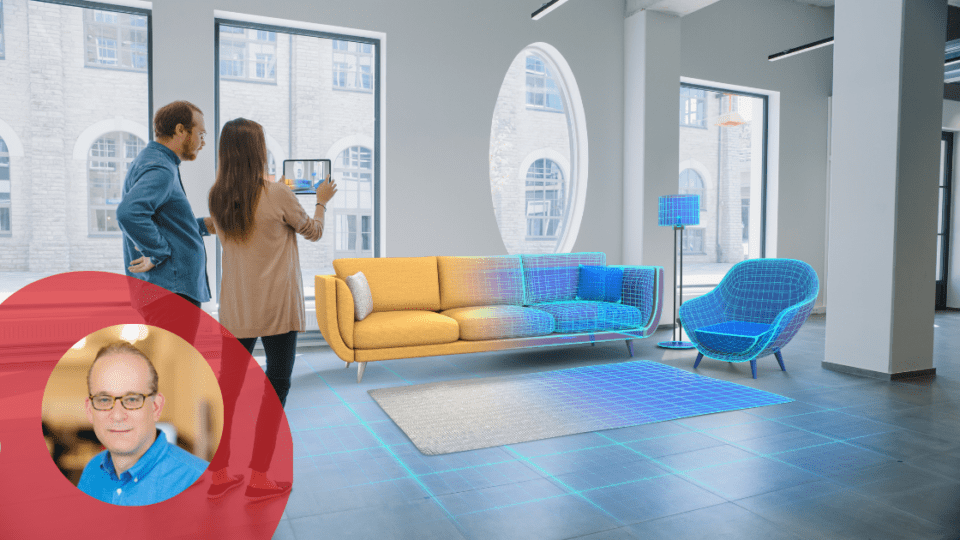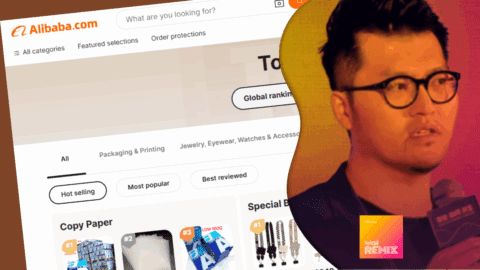When the mobile game “Pokémon GO” made a splash in 2016, global audiences got their first taste of just how engaging augmented reality experiences could be — and brands took notice.
Augmented reality, like the filters and lenses found on Instagram and Snapchat, transform the passive experience of being served a piece of content into an immersive one. From a marketer’s perspective, this gives you the opportunity to blur the lines between native content and branded advertisements. These experiences are the newest flavor of social commerce that is redefining the retail shopping experience — both online and in-person.
Global social commerce sales are expected to skyrocket from $492 billion in 2021 to $1.2 trillion in 2025, and this growth means that AR experiences will “have the potential to change the social commerce game for brands targeting tech-savvy consumer demographics,” according to a recent TIME report.
When you consider that only 1% of retailers currently use AR, but 71% of consumers say it would help them make more confident buying decisions, the opportunity to create a profound impact on the market with augmented reality becomes very clear. That’s why these immersive experiences need to be a near-term goal, and not part of retailers’ five-year plan.
But while augmented reality shopping experiences are still in their infancy and may sound complex, they really don’t need to be. We’ll take you through three unique ways you can use augmented reality to, well, augment your retail advertising strategies.
Face Effects: Digital Fitting Rooms
The best part about in-person shopping? The tactile experience of being able to physically hold, inspect and feel the product you have your eyes on. This is especially true for clothing and beauty products where how you look using the product is of the utmost importance. But the worst part about in-person shopping? Having to try on those clothes in a cramped room with a line of people waiting for you to hurry up!
There’s where augmented reality “try-on” effects come in. This experience gives brands the ability to give their customers all the benefits of in-person shopping from the comfort of their own homes. These effects allow customers to superimpose a product — whether it’s shoes, eyewear or makeup — on themselves through their front-facing mobile phone camera. Now you don’t have to leave your house just to see how a pair of hipster glasses look on you; you can open your phone and see how those frames fit your face instantly.
Try-on effects are some of the most concrete examples of why AR has proliferated in the shopping experience. It’s simple, easy to use and the benefits are ridiculously evident — even if you’ve never used one of these filters before. Being able to get an on-demand visual representation of what you will look like allows the online customer to make just as informed of a buying decision as the in-person shopper.
World Effects: Digital ‘Feng Shui’
If you sell home décor, you can use AR effects to place products — be it furniture, appliances or pieces of art — virtually into a user’s home through their regular mobile phone camera lens. Think of it as “digital feng shui” where the customer can get a vibe check for how a new couch or television will look and feel in their space before hitting that “buy now” button.
These are called World Effects, as it is augmenting the physical environment around the user, rather than just their face or body. According to Snapchat, one of the leading social platforms that has helped to popularize AR effects, “world lenses impact those in the middle of the journey and result in higher purchase intent (+8%) and build relevance for the brand (+7%). Front-facing AR lenses help lift brand image for those closer to purchase, with a 5% lift in brand uniqueness and 4% lift in relevancy.”
These effects are another immediate example of the incredible benefits augmented reality provides retail marketers. While you can “try-on” clothes and make-up both virtually and at-home with similar benefits, you can’t really tell how that new loveseat will look in your reading nook when you are in a brick-and-mortar store. But with augmented reality, you have the opportunity to help your customer make an even more informed purchasing decision than ever before.
Experiential Effects: Give Your Customers a Gift
We have a saying at QuickFrame whenever we discuss augmented reality effects: you want to give your audiences a gift, not an ask.
What does that mean? Your advertising creative needs to give your audience — in this case your target customers — something they find valuable. With augmented reality effects, you are providing an inventive, entertaining customer experience that doesn’t feel like a brazen sales pitch to grab their attention — even if that is ultimately what you are doing.
These “gifts” are often wickedly interactive, which is what makes them so engaging. Everyone’s favorite DIY decor brand IKEA created a wildly fun AR experience on Snapchat that was designed as an escape room. Users had to reorganize many of IKEA’s familiar pieces of furniture to solve the puzzle and escape, while also getting a good idea of how those same pieces of furniture might look in their own home.
For another example, Smartwater, one of the leading CPG brands in the bottled water space, wanted to drive engagement for an influencer-focused brand refresh on Instagram and Facebook. Rather than employing a traditional influencer campaign, Smartwater partnered with QuickFrame by MNTN to develop a custom AR effect tailor-made for the push. The selected influencers were asked to use the custom lens when unboxing the new products for their followers, driving more eyes to not only the filter, but their brand in general.
We were always moving toward a future where online would inevitably usurp in-person retail as the preferred shopping experience, but this redefined landscape was exponentially accelerated over the past two years. If you don’t match pace now, you may never be able to catch up. Retail brands must evolve just as fast as consumer buying behaviors to ensure they are delivering the experience modern audiences crave. And now more than ever, the experiences they crave are found within augmented reality.
As VP of Customer Success, Michael Block leads the Client Success team that manages QuickFrame’s largest Fortune 500 clients. In this role, Block advises customers on how to transform their content production approach so they can unlock more audience-targeted content, more frequently. Previously, Block founded and led a sales and business development consultancy and was an executive at Sony Music Entertainment (which certainly helped Michael achieve the milestone of seeing over 1,000 concerts).
















